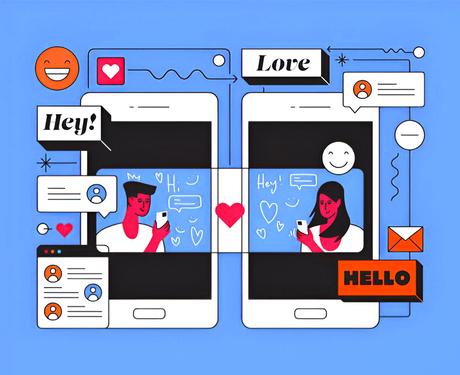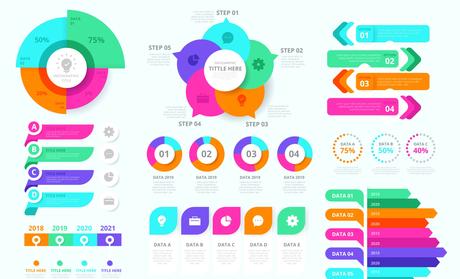In the ever-evolving world of business marketing, the quest for innovative and effective methods of communication is perpetual. One such method that has gained substantial traction is animation. This powerful medium has transcended its origins in entertainment to become a cornerstone of modern marketing strategies.
The dynamic nature of animation allows businesses to convey complex messages in an engaging and visually appealing manner, making it an indispensable tool for marketers.
This article delves into the five key reasons why animation is essential for business marketing, exploring its historical context, psychological impact, versatility, cost-effectiveness, and future potential.
Historical Context
The journey of animation in marketing has been a fascinating evolution. From the early days of hand-drawn advertisements to the sophisticated digital animations of today, this medium has continually adapted to technological advancements.
Initially, animation was used sparingly due to high production costs and limited technology. However, as digital tools became more accessible and affordable, animation found its way into mainstream marketing.
The transition from traditional animation techniques to computer-generated imagery (CGI) marked a significant milestone, enabling marketers to create more intricate and captivating visuals.
Modern Animation Techniques
Today, the world of animation is characterized by a plethora of modern techniques and technologies. From 2D and 3D animations to motion graphics and stop-motion, the options are virtually limitless. Advanced software and tools have democratized animation production, allowing even small businesses to leverage this medium effectively.
Techniques such as whiteboard animations, kinetic typography, and explainer videos have become particularly popular in business marketing, each offering unique ways to capture audience attention and convey messages succinctly.
The Power of Visual Storytelling
5 Reasons Why Animation is Essential for Business Marketing lies in its unparalleled ability to tell stories. Humans are inherently drawn to stories, and animation provides a versatile canvas for crafting compelling narratives.
By combining visual elements with sound and motion, animation can create immersive experiences that resonate deeply with viewers. This emotional connection is crucial in marketing, as it helps build brand loyalty and fosters a memorable brand identity.
Engagement and Retention
One of the most significant advantages of animation is its impact on audience engagement and retention. Animated content is inherently more captivating than static images or text, making it more likely to capture and hold viewers’ attention.
This is particularly important in the digital age, where attention spans are dwindling, and competition for consumer attention is fierce. Studies have shown that animated videos can increase viewer engagement and retention rates, leading to higher conversion rates and more effective marketing campaigns.
Versatility Across Platforms
Another reason why animation is essential for business marketing is its versatility across various platforms. Whether it’s a website, social media, email marketing, or even television, animation can be adapted to fit any medium.
This adaptability makes it a valuable asset for marketers, enabling them to maintain a consistent brand message across different channels. Additionally, animations can be easily repurposed, allowing businesses to maximize their investment by using the same content in multiple contexts.
Cost-Effectiveness
Contrary to popular belief, animation can be a cost-effective marketing solution. While high-end animations with intricate details and effects can be expensive, there are plenty of budget-friendly options available.
Tools like Adobe Animate, Blender, and even online platforms like Powtoon offer affordable solutions for creating professional-quality animations. Moreover, the return on investment (ROI) for animated content often justifies the initial expenditure, as it tends to generate higher engagement and conversion rates compared to traditional marketing methods.
Brand Personality and Animation
Animation offers a unique opportunity to infuse brand personality into marketing content. By leveraging distinctive animation styles, colors, and characters, businesses can create a visual identity that reflects their brand values and resonates with their target audience.
This personalization not only enhances brand recognition but also helps differentiate the brand in a crowded marketplace. For instance, a tech company might use sleek, futuristic animations to convey innovation, while a children’s toy brand could opt for playful, vibrant animations to evoke joy and creativity.
Read More: 10 New Innovative Business Ideas to Fuel Your Success
Psychological Impact
The psychological impact of animation on consumers is profound. Animations are not just visually stimulating; they also evoke emotions and enhance memory retention.
The combination of motion, color, and sound in animations can trigger emotional responses that static images or text cannot achieve.
This emotional engagement is crucial in marketing, as it can influence consumer behavior and decision-making processes. Animated content is also more likely to be shared on social media, further amplifying its reach and impact.
Case Studies of Successful Campaigns
To truly understand why animation is essential for business marketing, it’s helpful to examine real-world examples of successful animated campaigns. Companies like Coca-Cola, Apple, and Airbnb have all used animation to create memorable marketing experiences.
Coca-Cola’s “Happiness Factory” campaign, for instance, used whimsical animations to create an emotional connection with consumers, resulting in increased brand loyalty and sales.
Similarly, Apple’s animated product launch videos have set a benchmark for how to effectively use animation to highlight product features and benefits.
Future of Animation in Marketing
The future of animation in marketing looks incredibly promising. As technology continues to advance, we can expect to see even more innovative and immersive animated content.
Emerging trends such as augmented reality (AR) and virtual reality (VR) are poised to revolutionize how businesses use animation to engage with their audiences.
Additionally, the increasing use of artificial intelligence (AI) in animation production will streamline workflows and reduce costs, making high-quality animations more accessible to businesses of all sizes.
Animation vs. Traditional Media
When comparing animation to traditional media, several advantages become apparent. Animation offers greater flexibility and creativity, allowing marketers to explore ideas that would be impossible or cost-prohibitive with live-action footage.
Furthermore, animated content can be easily updated or modified, ensuring that marketing messages remain relevant and up-to-date.
In contrast, traditional media often requires significant time and resources to produce and update, making it less agile in response to market changes.
Creating Animated Content
Creating effective animated content involves several key steps. First, it’s essential to define the marketing goals and target audience.
Next, developing a compelling storyboard and script ensures that the animation conveys the intended message.
Once the creative direction is set, the actual production process involves designing characters, backgrounds, and other visual elements, followed by animation and post-production work. Collaborating with experienced animators or animation studios can help ensure high-quality results.
Animation Software and Tools
A wide range of software and tools are available to help marketers create animations. Industry-standard programs like Adobe Animate and After Effects offer powerful features for professional animators, while more accessible options like Powtoon and Animaker provide user-friendly interfaces for beginners.
Additionally, open-source software such as Blender offers robust capabilities for 3D animation without the high costs associated with commercial software. Choosing the right tool depends on the specific needs and budget of the project.
Outsourcing Animation Projects
While some businesses prefer to handle animation production in-house, outsourcing can be a viable option, especially for complex or large-scale projects.
Working with professional animation studios or freelance animators can provide access to specialized skills and expertise, ensuring high-quality results.
However, it’s crucial to carefully vet potential partners and establish clear communication and expectations to avoid any misunderstandings or issues during the production process.
Measuring ROI
Measuring the return on investment (ROI) of animated marketing campaigns is essential to determine their effectiveness.

Key performance indicators (KPIs) such as engagement rates, conversion rates, and social media shares can provide valuable insights into how well the animated content is performing.
Additionally, tools like Google Analytics and social media analytics platforms can help track the impact of animation on website traffic and audience behavior, allowing businesses to make data-driven decisions for future campaigns.
SEO Benefits of Animation
One of the lesser-known benefits of animation is its positive impact on search engine optimization (SEO). Animated content can increase the time users spend on a website, reducing bounce rates and signaling to search engines that the content is valuable and engaging.
Furthermore, animations can be optimized with alt text, captions, and descriptions to improve search engine visibility.
Incorporating keywords naturally into animated videos and infographics can also enhance SEO efforts, driving more organic traffic to the website.
Social Media Integration
Social media platforms are ideal for leveraging the power of animation. Animated posts and stories tend to receive higher engagement rates compared to static images, making them an effective way to boost visibility and reach.

Platforms like Instagram, TikTok, and Facebook offer various tools and features to create and share animated content, allowing businesses to connect with their audience in creative and interactive ways. Additionally, social media algorithms often prioritize video content, further amplifying the impact of animated posts.
Interactive Animation
Interactive animation takes engagement to the next level by allowing users to interact with the content.
This can include clickable elements, quizzes, and interactive infographics that encourage active participation from the audience. Interactive animations are particularly effective in educational and training contexts, where they can enhance learning experiences and improve information retention.
For marketing purposes, interactive content can increase user engagement and drive higher conversion rates by providing a more immersive and personalized experience.
Animation for Mobile Marketing
With the increasing use of mobile devices, optimizing animated content for mobile marketing is essential. Mobile-friendly animations should be lightweight and load quickly to ensure a smooth user experience.
Responsive design techniques can help ensure that animations display correctly on various screen sizes and orientations.
Additionally, considering the mobile viewing context, such as shorter attention spans and touch-based interactions, can help create more effective and engaging mobile animations.
User Experience Enhancement
Animations can significantly enhance user experience (UX) by making interfaces more intuitive and visually appealing.
Micro-interactions, such as animated buttons and transitions, can provide feedback and guide users through a website or application, improving usability and satisfaction.
Well-designed animations can also add a sense of delight and playfulness, making interactions more enjoyable and memorable. However, it’s essential to use animations judiciously to avoid overwhelming or distracting users.
Animated Infographics
Infographics are a popular way to present complex data and information in a visually appealing and easily digestible format.

Animated infographics take this a step further by adding motion and interactivity, making the content even more engaging. By animating key data points and visual elements, businesses can highlight important information and create more dynamic presentations.
Animated infographics are particularly effective for social media and digital marketing, where they can capture attention and encourage sharing.
Read More: Top 10 E-commerce Trends To Look Out For In 2021 [Infographic]
Legal Considerations
When creating and using animations for business marketing, it’s essential to consider legal issues such as copyright and intellectual property.
Using copyrighted music, images, or characters without permission can lead to legal disputes and potential fines. Businesses should ensure that all elements of their animations are either original or properly licensed.
Additionally, protecting the intellectual property of original animated content through trademarks and copyrights can safeguard against unauthorized use by competitors.
Sustainability and Animation
Sustainability is becoming an increasingly important consideration in all aspects of business, including marketing. Fortunately, digital animation is a relatively eco-friendly medium, as it does not require physical materials or resources.
However, businesses can further reduce their environmental impact by using energy-efficient software and hardware, minimizing unnecessary render times, and choosing cloud-based solutions with lower carbon footprints.
Promoting sustainability through animated content can also resonate with environmentally conscious consumers and enhance brand reputation.
Conclusion
Animation has emerged as a vital tool for business marketing, offering numerous benefits such as enhanced storytelling, increased engagement, versatility, cost-effectiveness, and a positive psychological impact on consumers.
As technology continues to advance, the potential for animation in marketing is bound to grow, providing businesses with even more opportunities to connect with their audiences in creative and impactful ways.
By leveraging the power of animation, businesses can create compelling marketing campaigns that not only capture attention but also drive results.
FAQs
1. Why is animation important for business marketing?
Animation is important for business marketing because it enhances storytelling, engages audiences, and can be adapted for various platforms, making it a versatile and effective tool.
2. How does animation increase engagement?
Animation captures and holds viewers’ attention better than static images or text, leading to higher engagement and retention rates, which are crucial for effective marketing.
3. Can small businesses afford to use animation in their marketing?
Yes, small businesses can afford animation by using budget-friendly tools and platforms that offer professional-quality animations at a lower cost.
4. What are the psychological benefits of using animation in marketing?
Animation evokes emotions and enhances memory retention, creating a stronger emotional connection with consumers and influencing their behavior and decision-making processes.
5. How can animation improve SEO for my website?
Animated content can increase the time users spend on your website, reduce bounce rates, and be optimized with keywords, alt text, and descriptions to improve search engine visibility.
6. What future trends can we expect in animation for marketing?
Future trends in animation for marketing include augmented reality (AR), virtual reality (VR), and the increasing use of artificial intelligence (AI) in animation production, offering more innovative and immersive experiences.

